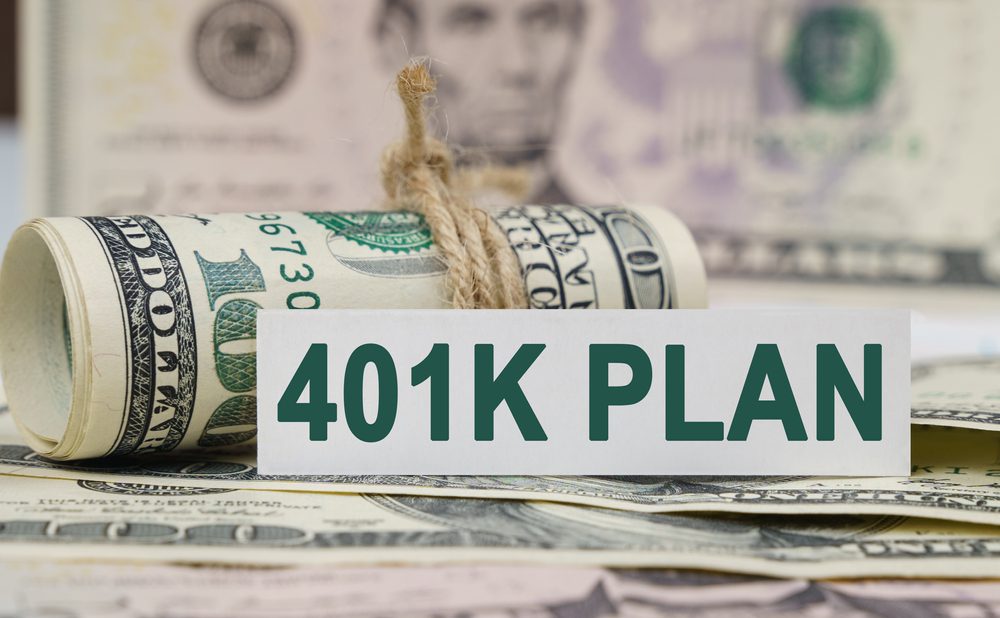Nowadays, when fewer people seem to care or have any kind of traditional pension, growing and protecting your 401(k) balance is highly important for a secure retirement.
If you have such a retirement fund, that’s awesome, but you have to be careful and stay up to date with all the rules. You wouldn’t want to wake up one day and see that all those fees, taxes, and any other mistakes might reduce your 401(k) balance.
If you want to know how to maximize your benefits to their maximum capacity, then you are in the right place. Let’s see what you can do:

Don’t settle for the default savings rate
It seems that brand-new employees are more likely to sign up for a retirement account at their company. Most often, they choose to have 3% of their pay deposited in a 401(k) plan offered by their company.
While saving 3% of your entire salary is still better than nothing, it might not be adequate to maintain your current lifestyle during retirement. For too many people, it won’t be enough. What you want to do is this: the minute you get a raise, save 1% more every year until you can finally get up to 20% of your pay.
Stay until you are fully vested
You won’t be able to keep your 401(k) match until you’re completely vested in that plan, which might take longer than expected. In most cases, we are talking about five or even six years of working for that company.
In fact, some employers might allow people who leave before they get fully vested to keep a certain amount of the match, which is decided based on their years of service. Others will simply ask the employees to forfeit the entire match.
If you think about it in the long run, sometimes it could be worth thousands of dollars to continue working for a company until you get fully invested in your 401(k) plan.
But if you are currently in a miserable, mentally degrading employment situation or you have been offered a life-changing opportunity to go somewhere else, then you should consider sacrificing that unvested portion.
Get a 401(k) match
Probably the most “famous” 401(k) match is 50 cents for each dollar saved up to 6% of pay. If your employer decides to offer a 401(k) match, then you should check to see if you have enough money to take advantage of it.
Capturing your 401(k) match is probably one of the fastest and most painless methods to boost your 401(k) balance.

Maximize your tax break
Traditional 401(k) plans will allow you to defer paying income tax on what you save for retirement. For instance, investors could easily contribute up to $20,500 to a 401(k) plan this year, and after reaching 50 years old, the limit jumps to $27,000.
However, low-income workers who earn a lot less than $34,000 for individuals, $51,000 for heads of household, and $68,000 for couples but also save something in a 401(k) plan could additionally claim the saver’s tax credit, which might cost as much as $1,000 for individuals and $2,000 for couples.
It’s also worth mentioning that contribution limits for 401(k)s and the saver’s credit income threshold adjust to inflation on a yearly basis.
Don’t cash out too soon
The wide majority of workers prefer switching jobs multiple times over the course of their career, which basically means that they need to figure out what to do with the 401(k) balance from their former employer.
It might be tempting to spend all that cash, but workers who decide to withdraw money from their 401(k) account before reaching 59 1/2 years old could face a 10% early withdrawal penalty and pay additional income tax on the amount they withdraw.
Also, early withdrawals might cause you to miss out on other valuable compound interest, which is highly essential for building a bigger nest egg. This money should be put away for retirement, and that’s all you have to do with it for a while.
Diversify your portfolio with a Roth 401(k)
More and more employers now offer a Roth 401(k) option in their hiring packages. This option allows employees to save a lot of after-tax dollars, but it’s also super convenient because distributions become tax-free in retirement.
A Roth 401(k) usually offers the biggest benefits to those employees who are younger, have a lower income, and also expect to be in a higher tax bracket later in their careers.
Another advantage is that it also adds tax diversification and a ton of flexibility to all portfolios for those who are about to retire.
Rollover without extra fees
When you switch jobs, you can generally leave your 401(k) balance in the hands of the last company you worked for or roll it over to an IRA or your new employer’s 401(k) plan.
However, if you suddenly decide to move your money, you should ask your former employer if he or she can transfer the entire balance to another financial institution instead of simply cutting you a check. Why would this be better? Well, it will instantly help you avoid taxes and penalties.

Minimize the fees
Investment options that require higher fees might significantly reduce your 401(k) balance over time, especially if you advance in your career.
Some 401(k) investments are known to have higher costs, so you should pick the lowest-cost investment in your 401(k) plan, as long as it matches your risk tolerance.
If we’re talking about a high-cost 401(k) plan, then you should consider saving in an IRA instead of the good old 401(k), especially after you finally get that match.
Generally, the U.S. Department of Labor wants 401(k) plans so they can send each participant a fixed, annual fee disclosure statement that enumerates the full costs of every single fund in the plan.
If the funds are not that good and the fees are high, you should take it to your human resources department and see if the company could change the plan. Don’t stay in this situation just because you might be afraid of the response. You have to put your interests above everything else.
Diversify all your assets
Your 401(k) account might lose some money, but you could also minimize the risk by going with a mix of stock and bond funds that are more appropriate for your risk tolerance.
Also, make a habit of periodically rebalancing your own portfolio to the target allocation. The closer you get to retirement, make sure you shift a portion of your 401(k) to a less volatile mutual fund so you can take care of your capital.
However, avoid making significant changes to your 401(k) investment strategy on impulse. This is probably one of the worst things you could do: adjust your investments every time you get scared of any economy-related news or story, thinking that it could “impact the market”.
Remember the required minimum distributions
After you reach 72 years old, you are obliged to take annual distributions from your 401(k). The penalty for failing to withdraw the right amount is 50% of the amount that should have been withdrawn.
You have to make sure you take the basic minimum distributions every single year during your golden years, so you can be sure that you avoid penalties.
What a tense subject! But when it comes to retirement funds, some things shouldn’t be avoided, even if they sound (and sometimes are) too complicated. In the spirit of difficult matters that need to be discussed, we have something else we’d recommend to you: How to Get Rid of Debt in Less Than One Year: 6 Tips








